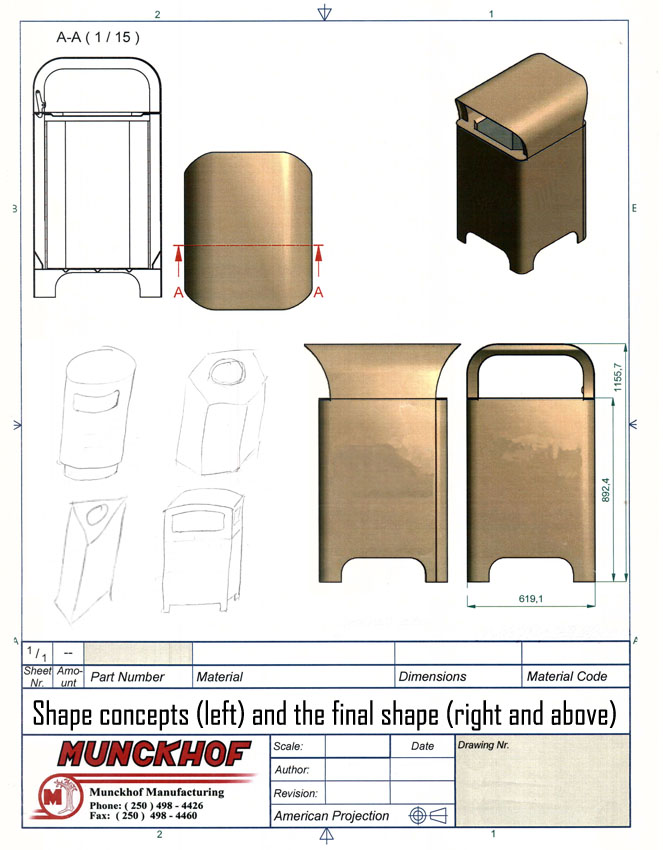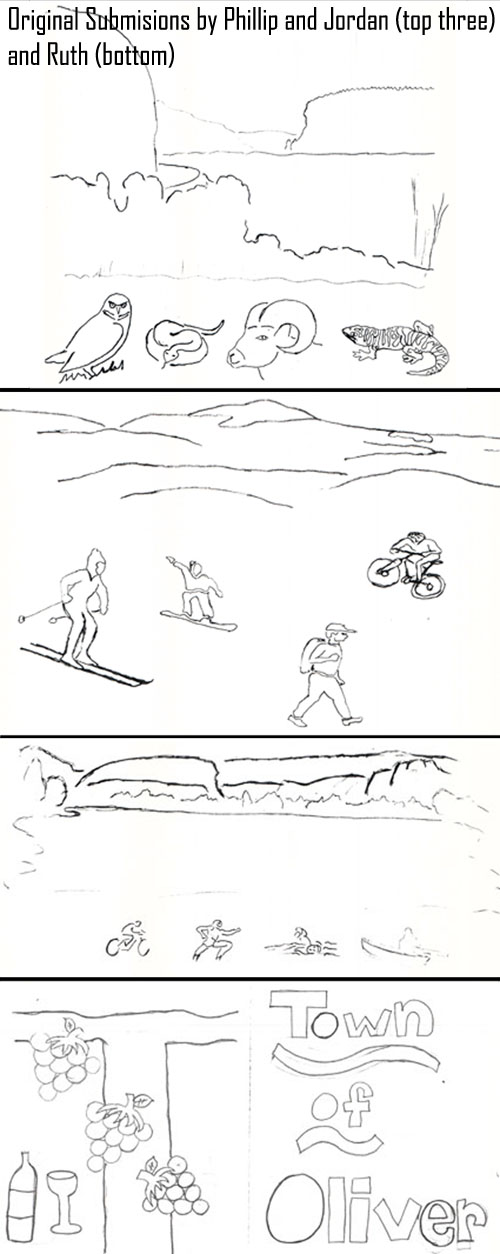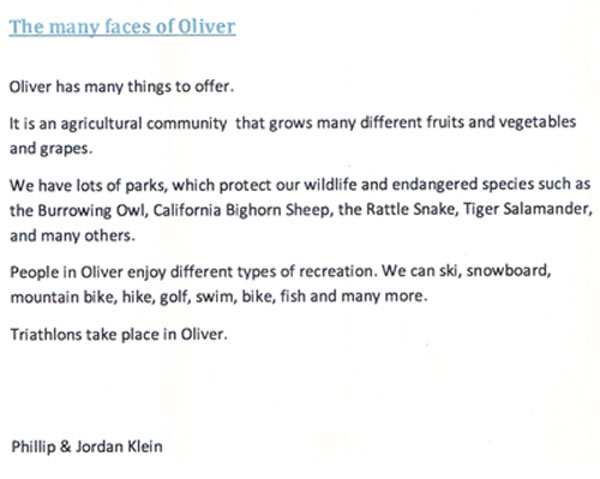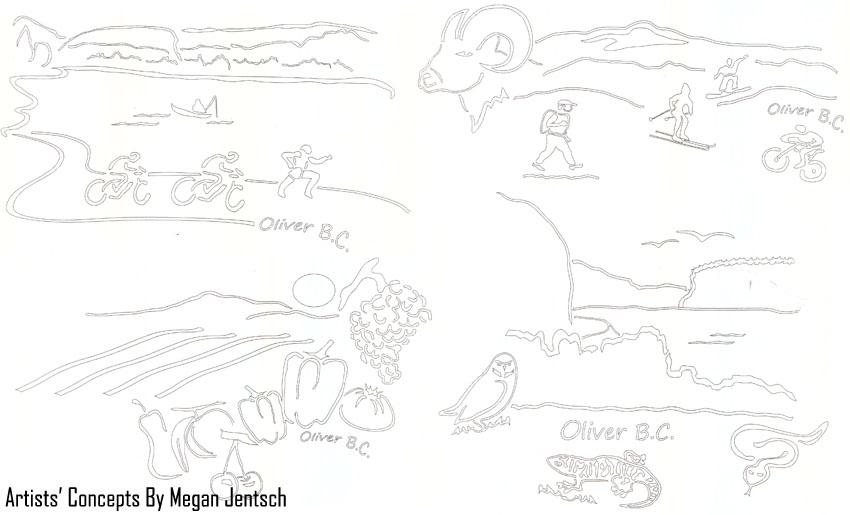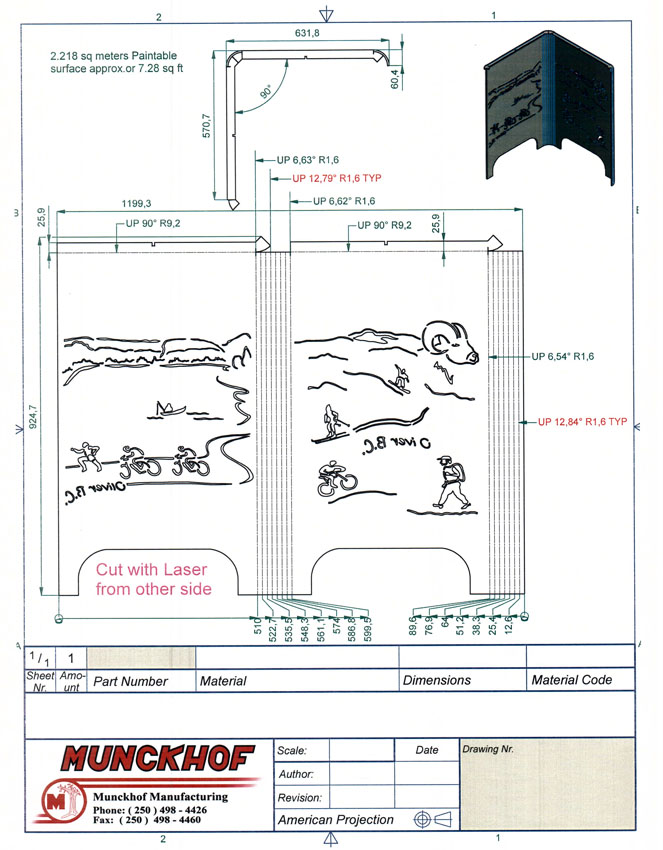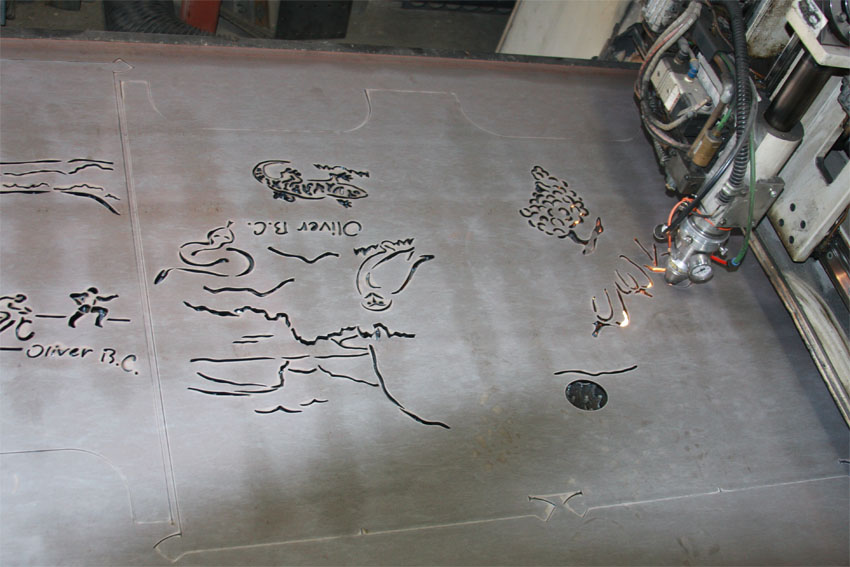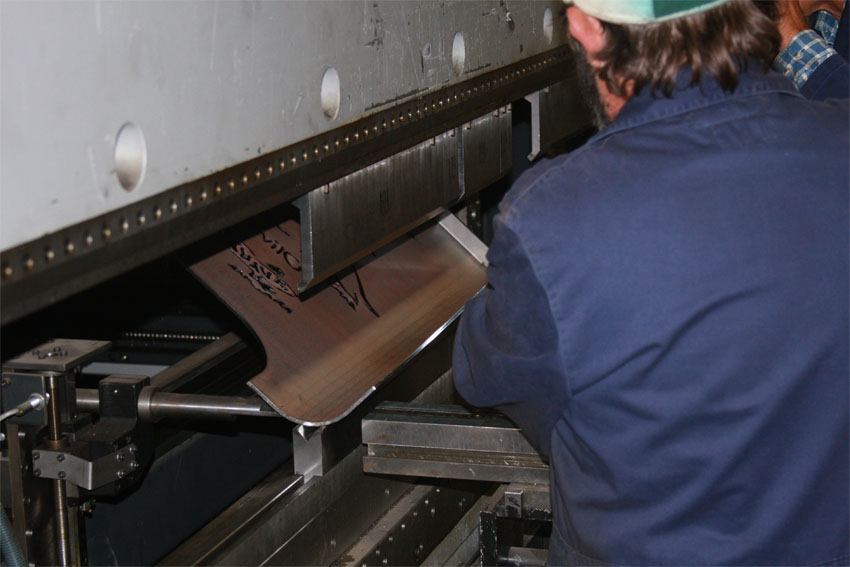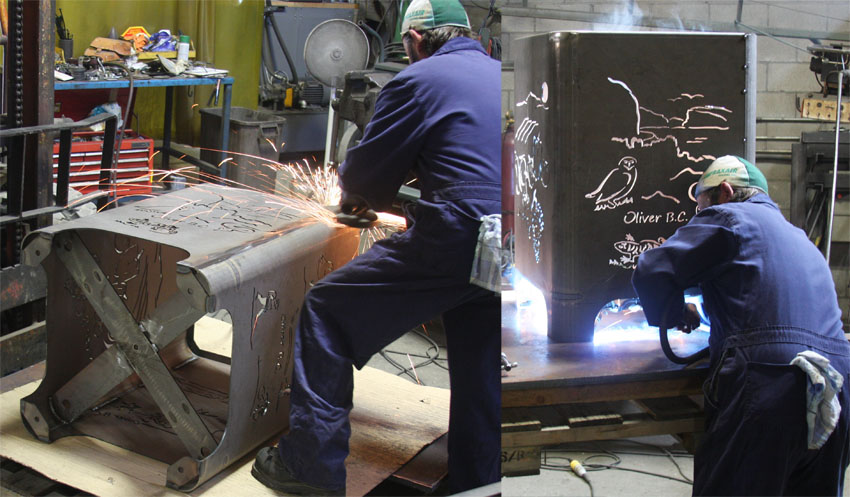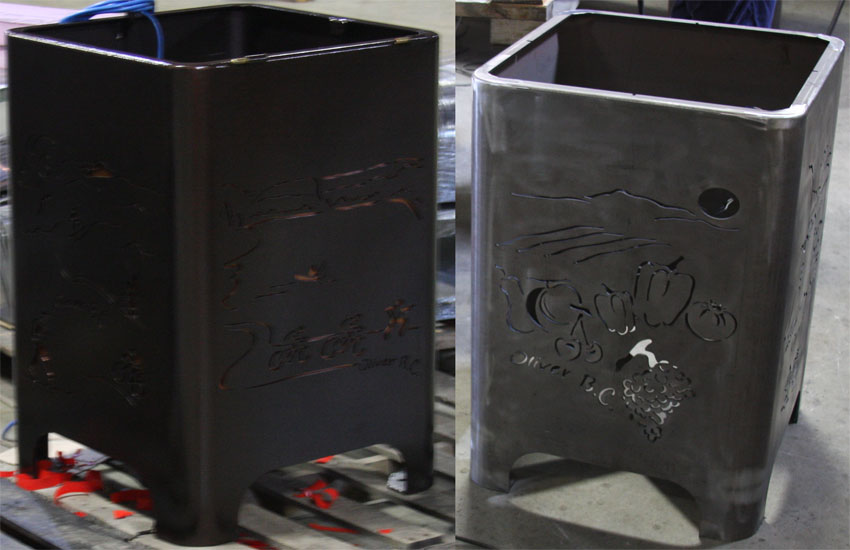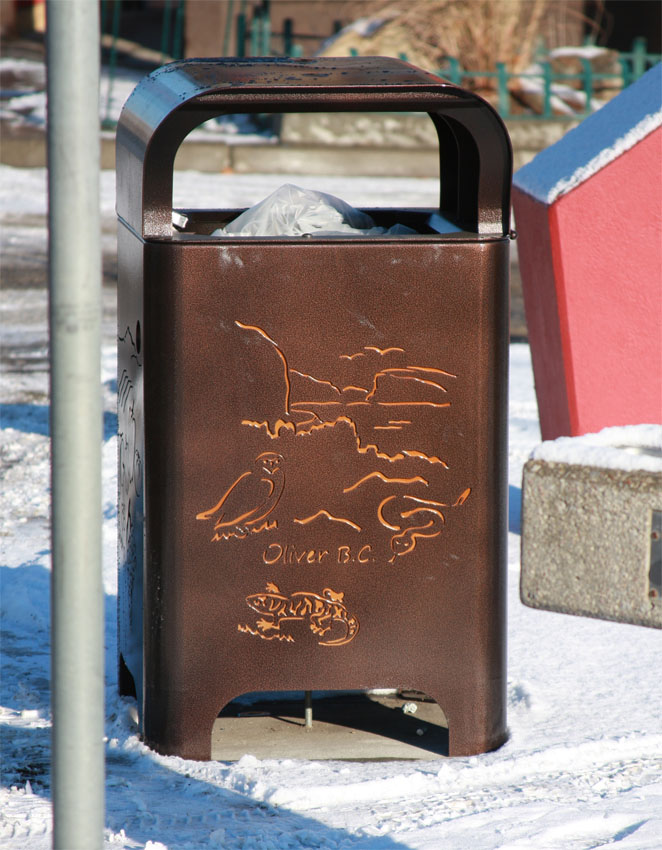December 27, 2011
In the Beginning:
Officials from the town of Oliver approached Munckhof mfg to ask if we could come up with a design for a new garbage can to replace the aging cast aluminum ones currently in use. The parameters for the new cans where that they must be unique, easy to access, have visual appeal, and employ heavy duty materials in their construction. That day set in motion the journey into producing a new can to brighten up Olivers downtown core.
Form and Shape:
First, a general shape had to be developed, this was done through collaboration of town works officials and the team at Munckhof working together to get something that fit the towns needs and made best use of the capacity of the machines at our shop. Many different shapes and sizes were considered and each was evaluated based on a number of factors such as capacity, durability, maintenance, ease of use and appeal.
Artsy Fartsy:
Next on the list was what design or logo to put on the can. This thoroughly stumped both the team at Munckhof and the town works guys, who all agreed that they were not much for working with art, let alone coming up with the stuff! So Munckhof mfg decided to hold an art competition. South Okanagan secondary, South Okanagan Adventist Christian, and the local home schoolers group were all invited to participate with prizes for first second and third. Town works staff pour over many entries and picked Jordon and Phillip Kleins joint submission for first and second place, and Ruth Rivera’s drawing for third.
Phillip and Jordon also submitted the following letter with their art:
Next we had to take the drawings that would end up on the cans and stylize them into a stencil format. This is because when they are cut into the metal there can be no open ended lines. Oliver native Megan Jentsch was contacted for the job. Megan, a graduate of the Florence Design Academy is currently a freelance artist in Calgary specializing in interior design.
The drawings and art then had to pass muster under town council before we could start finalizing the overall form and begin creating the working documents.
Working Documents:
Now the drafting team at Munckhof can get down to business! The artists drawings, along with the shape concept are taken and flat patterns are made. The draftsman uses a program to create code that will be read by our computer-numerical-controlled (CNC) machinery. The draftsman creates code for each piece of the can, and then he has to make up drawings to explain how it all fits together.
Once all the documents are finished, its back to town council for final design and budgetary approvals. Then we can get down to work!
Construction:
The flat patterns made up by the draftsman were cut into steel using a computer controlled laser, the table under the beam is moved in very precise measurements and can cut almost any shape.
The corners of the cans may appear round, but they are actually formed by making lots of small bends (called “Braking”) using a break press.
Once the parts have been cut and bent into shape, they can be put together, the seams are welded along their full length and then ground smooth.
Now the cans can be sent out for paint. The Oliver cans were painted using a process called powder coating. In powder coating a powder material is charged with negative energy, and the metal of the can is positively charged, then the powder is sprayed over the metal and the two charges attract the powder to the metal. Then the item is placed in a large oven and the the material is melted onto the metal, creating a very durable coating.
A NOTE TO VANDALS: the “copper” backing of the cans is NOT actual copper, it is a special material used in powder coating to SIMULATE copper.
When the cans come back from coating the final assembly can begin and the backings can be glued in before they are shipped off to the town
End Result:
Munckhof Mfg is very proud to have been a part of this project, we believe it is a testament to our town using a local company and showcasing local art to create a beautiful product.
